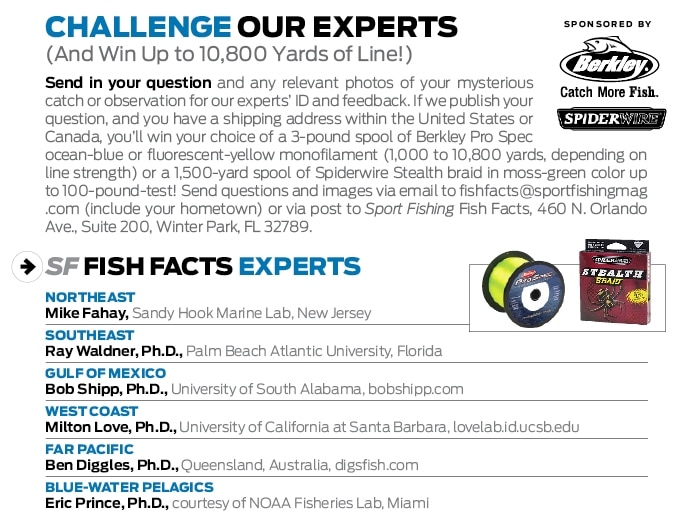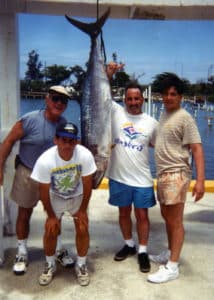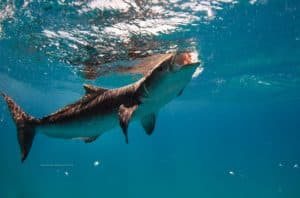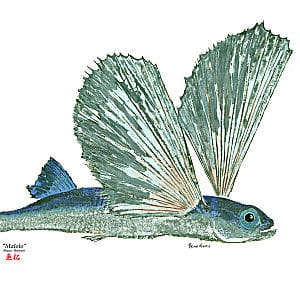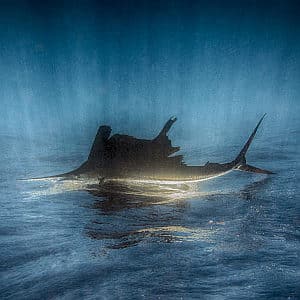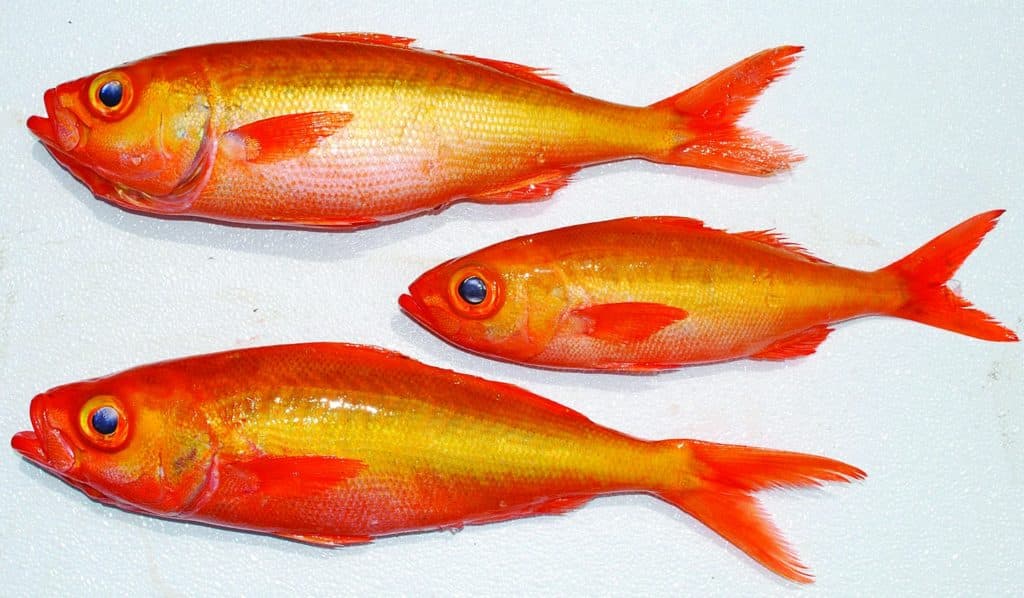
GOLLY! IT’S A KALI!
A: You and your dad have caught some golden kali kali, Erythrocles scintillans, also known as golden rovers. These fish are members of the family Emmelichthyidae (rovers and redbaits), a group of 17 species of baitfish-size deepwater fishes that grow to a maximum size of around 12 inches long. Golden kali kali occur throughout the Pacific Ocean, near coral reefs at depths between 300 and 2,000 feet. Little is known about the biology of this species except for the fact that it feeds on plankton and probably follows the vertical movements of plankton layers toward the surface at night.
In places like Australia, where deepwater trawl fisheries for the closely related redbait (Emmelichthys nitidus) are planned, biologists found that the redbait matured at between 6 to 9 inches long, and the females spawned once every three or so days over a protracted spawning period during the spring months. — Dr. Ben Diggles
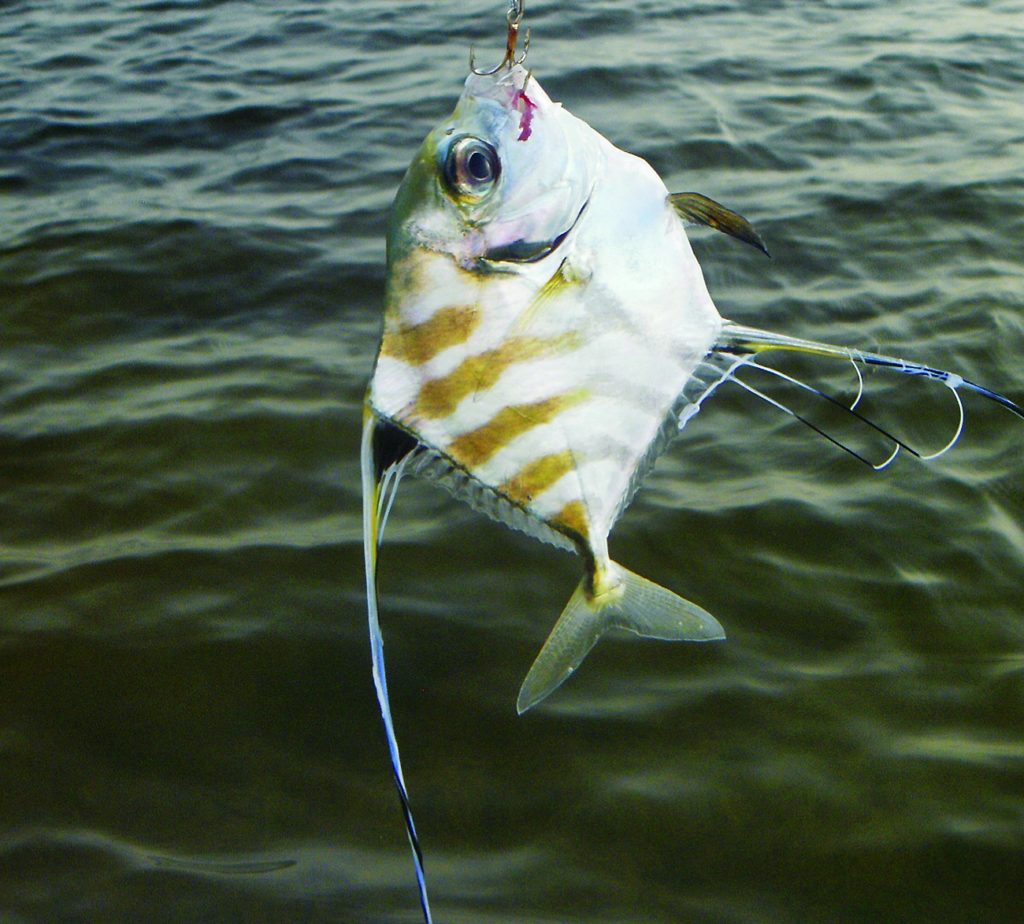
AN AFRICAN IN NEW ENGLAND
A: Walter, it is indeed an African pompano, Alectis ciliaris . These do in fact range pretty far north, occasionally reaching New England. In fact, they’re found worldwide in tropical and temperate seas. Although a member of the jack family, the species is not in the same group as the true pompanos (genus Trachinotus ), and as such, they are not nearly as prized for food as their cousins are. They get pretty large as well, topping 40 pounds — the IGFA all-tackle record is 50 pounds, 8 ounces, from Daytona Beach, Florida.
But perhaps the most fascinating feature of these guys is those fin streamers trailing off the dorsal and anal spines. When the fish are very small, say a couple of inches, their streamers may reach a foot in length and trail gracefully behind. At this stage, they often travel in pairs, and present a delightful sight. As they age, the streamers become less pronounced, and are barely noticeable in adults, although the fins themselves are a respectable length. — Bob Shipp
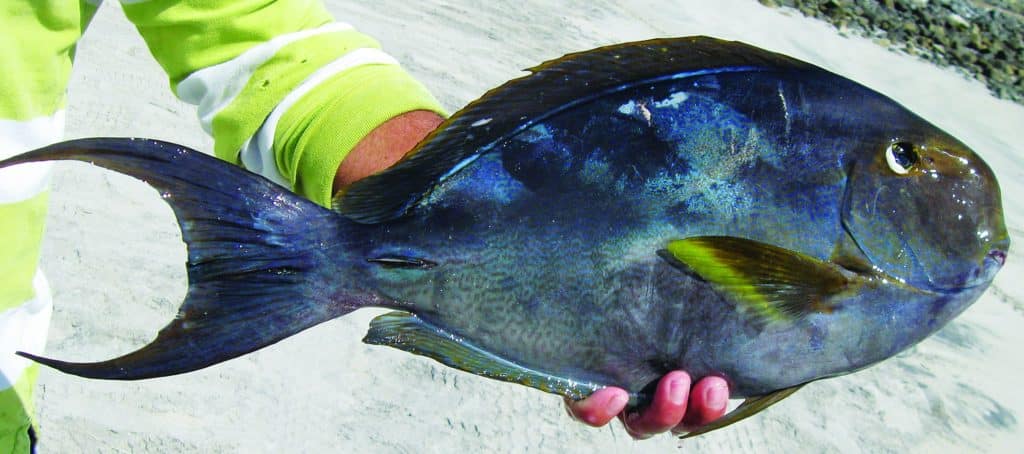
BEWARE OF FISH BEARING SCALPELS
A: Gary, the yellow pectoral fin, deeply forked tail and blue margin along the back and belly can only mean you have caught a yellowfin surgeonfish, Acanthurus xanthopterus . Although it is found in the tropics throughout the world, your catching it off La Paz is somewhat unusual, as it is (or at least used to be) relatively rare that far north. Yellowfin reach about 2 feet long and live on reefs and sand from the barely subtidal zone down to maybe 300 feet. You can see them in schools, poking along while feeding on algae and small organisms. Like other surgeonfishes, this species has a razor-sharp, but not venomous, spine just forward of the tail, which serves as a defense against such predators as sharks and groupers. Interestingly, this is apparently one of the few surgeonfish species that is often taken on hook and line. —Milton Love
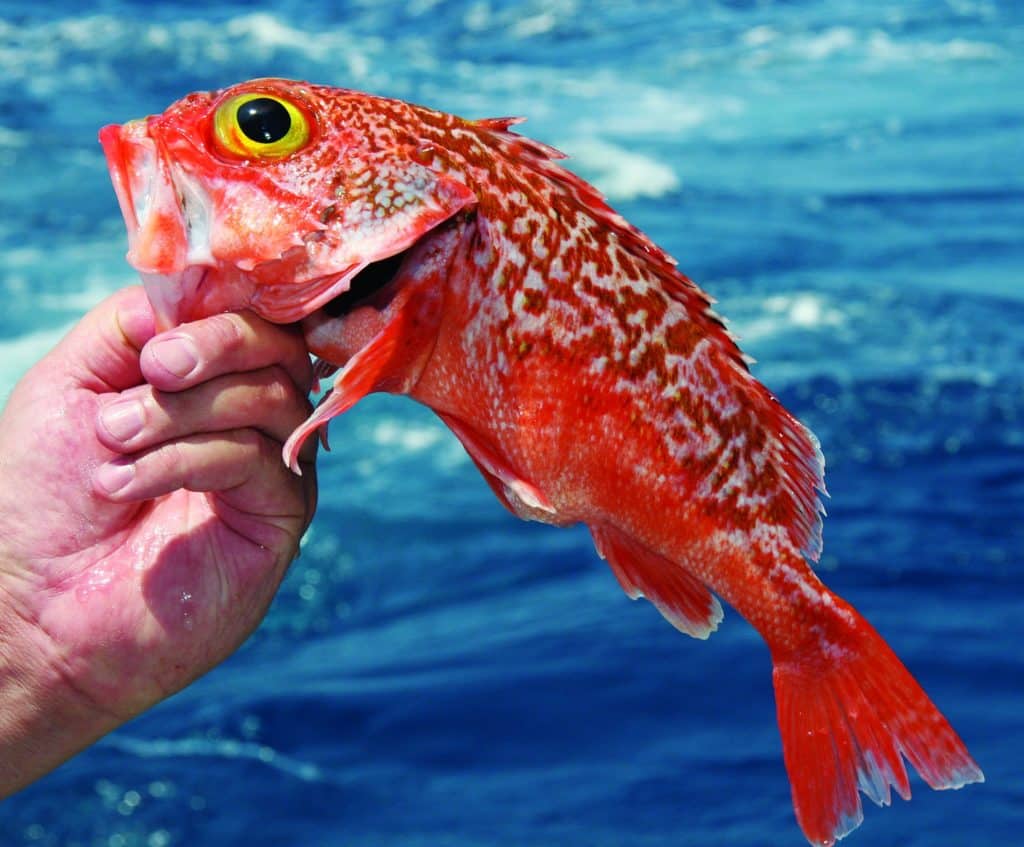
A FISH WITH NO NAME
David Miller
Storrs, Connecticut David Miller
A: Although I can’t be certain of the species from the photograph, your catch is a member of the genus Helicolenus, and is probably H. lahillei . The species is little-known and doesn’t have a common name in English. (Its common name in Japanese is rapurata-yumekasago.) Some ichthyologists once considered it a subspecies of the blackbelly rosefish, H. dactylopterus , but it is now usually accorded species status. Helicolenus lahillei is a member of the family Sebastidae, which includes the rockfishes. These are closely related to the scorpionfishes (family Scorpaenidae) and also possess venomous spines. H. lahillei is purported to be good table fare, and a commercial fishery exists for this species in the waters off Patagonia. What I find particularly interesting about your catch from the Gulf of Mexico is that H. lahillei is known to range from southern Brazil south to Argentina, at depths between 265 and 710 feet. It has not been reported elsewhere, likely due to limited fishing in its depth range. Many cold-water marine organisms, including fishes, live at progressively greater depths as their populations approach the equator; this may also hold true for H. lahillei. — Ray Waldner
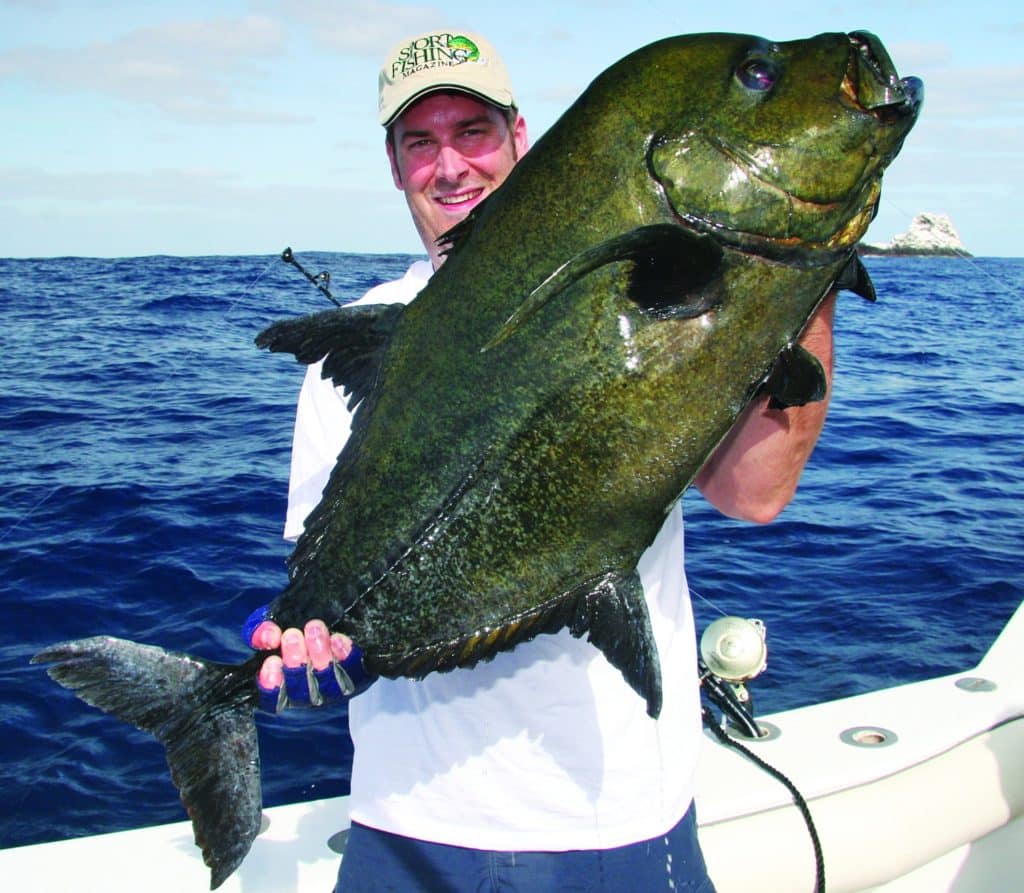
From the Fish Facts Archives
(Caranx lugubris)
Found in all the world’s tropical seas, the black jack is every bit as tough and powerful as it looks, and can always be counted on for a grueling fight. Although eaten in some areas, black jacks have been implicated in ciguatera poisonings. The IGFA all-tackle world record, caught in 2013 at Hurricane Bank off Mexico, weighed 41 pounds, 7 ounces. Doug Olander / Sport Fishing
